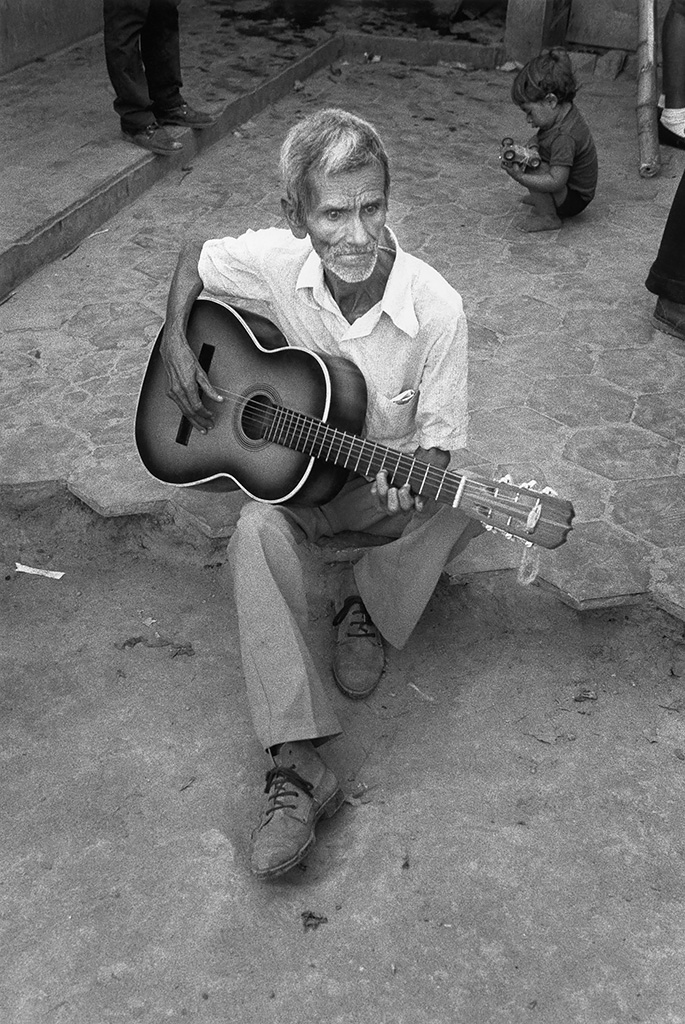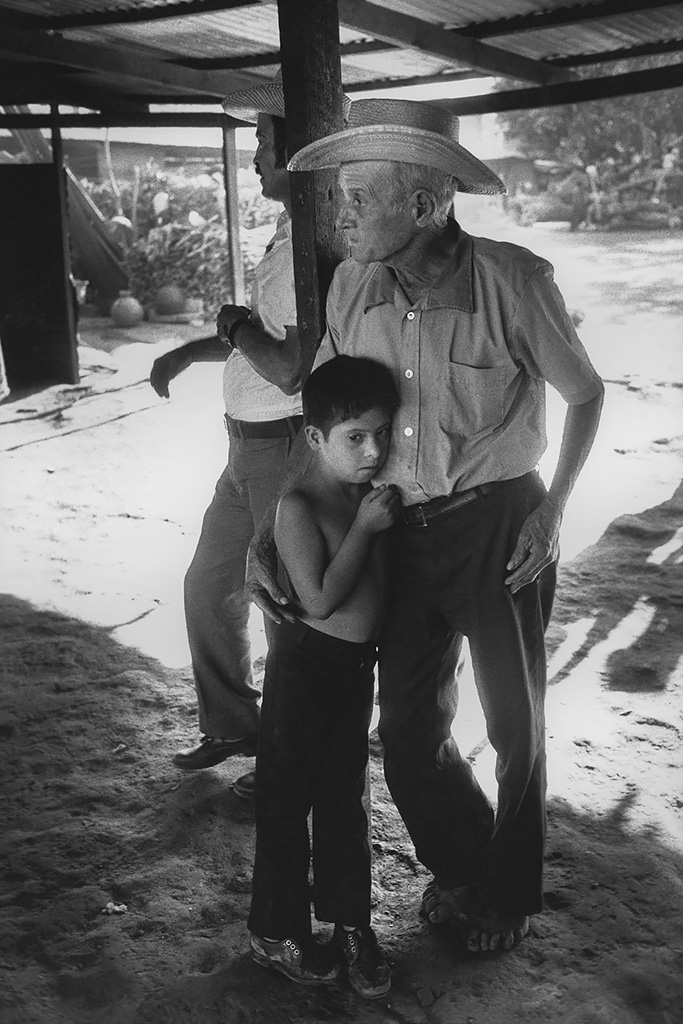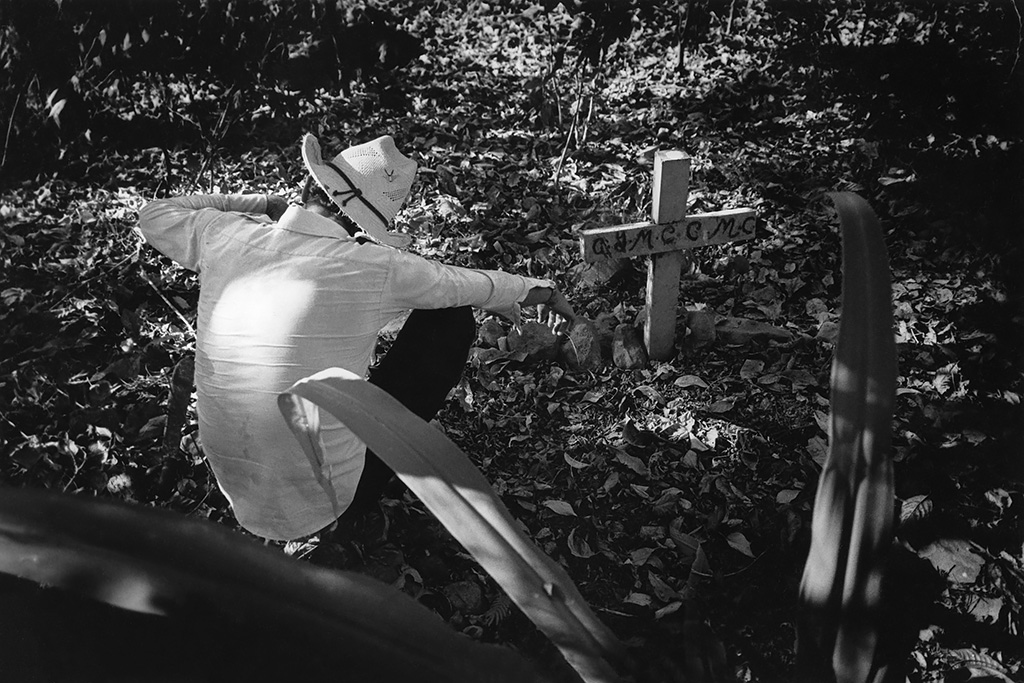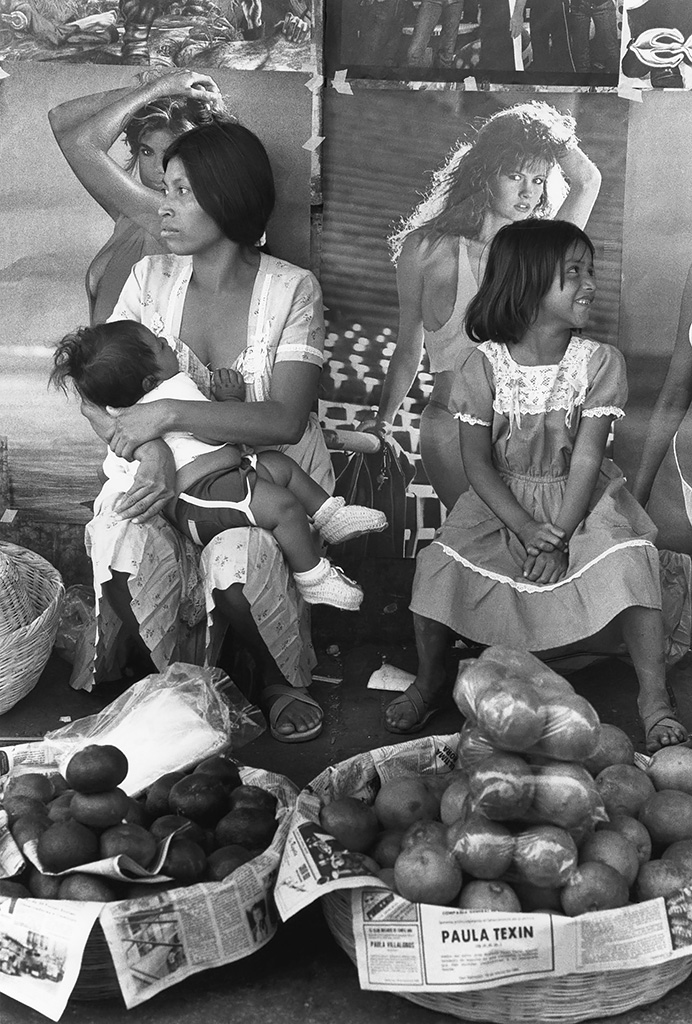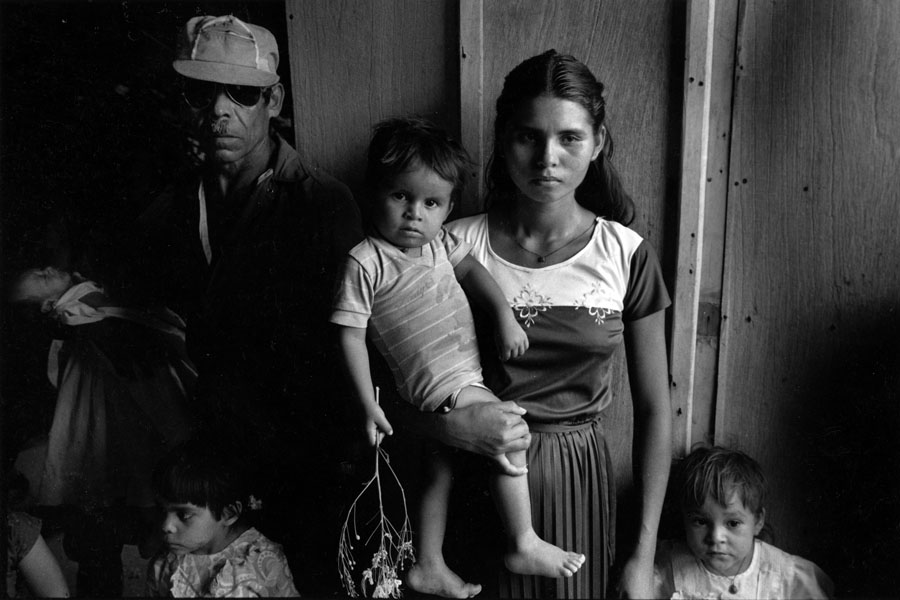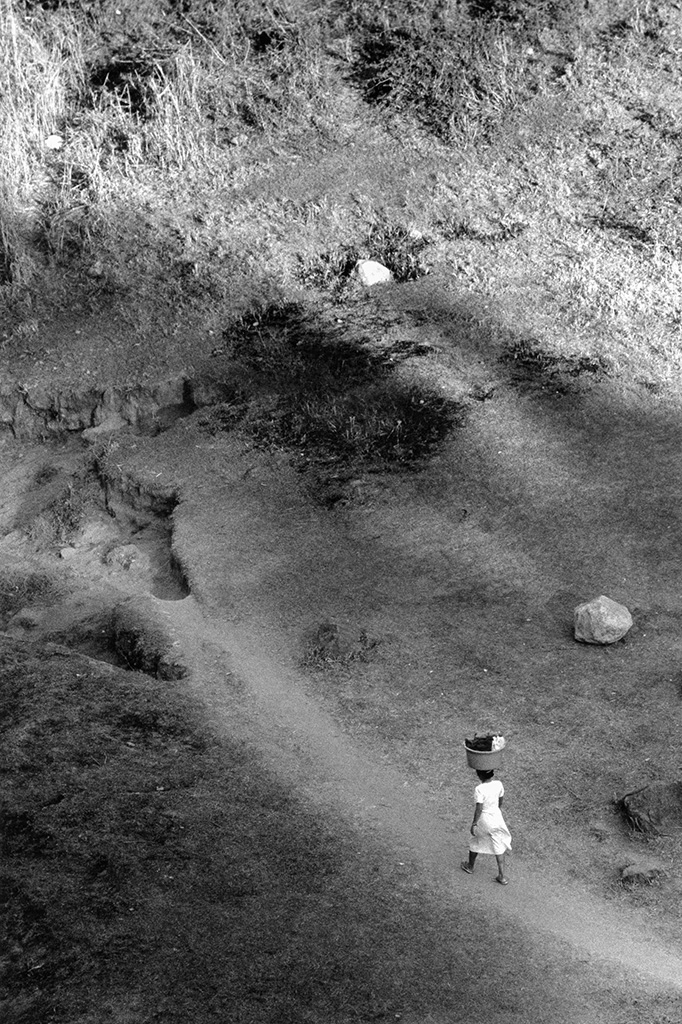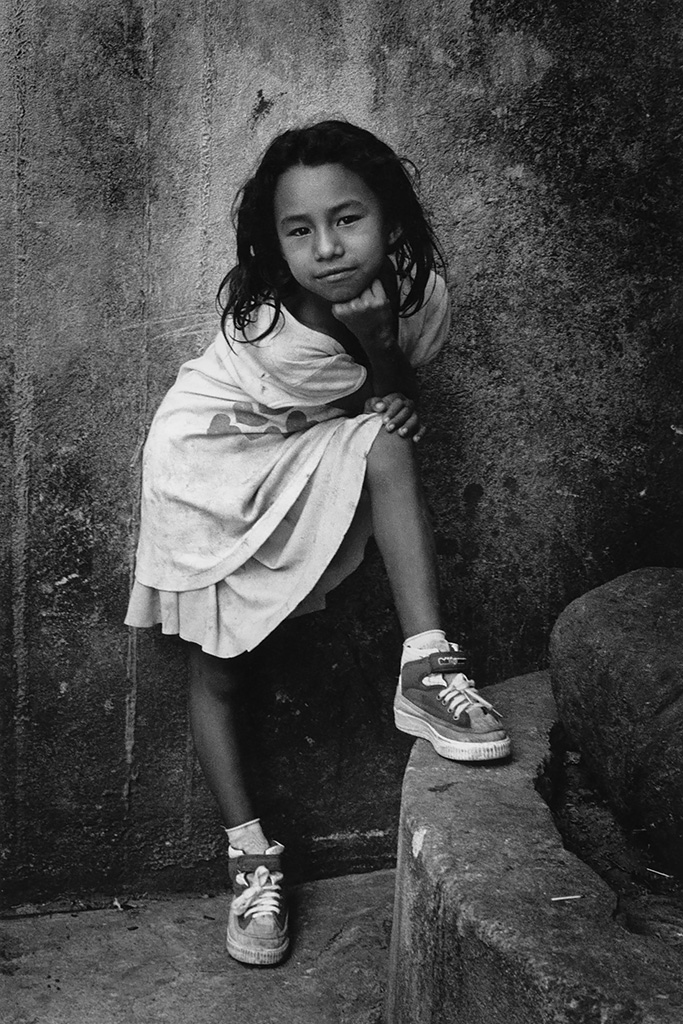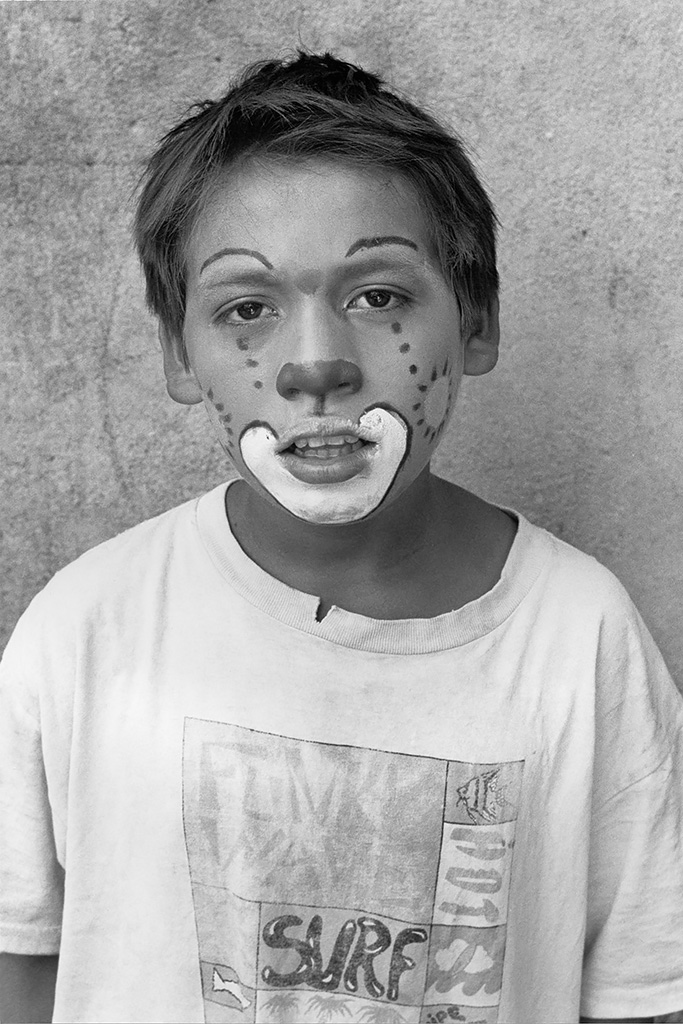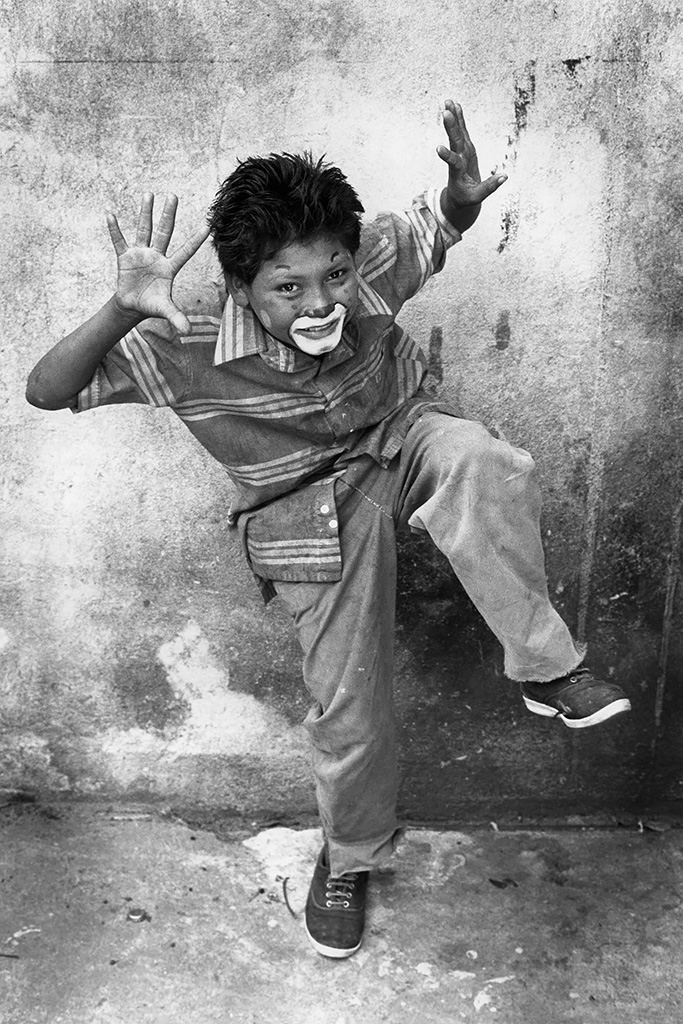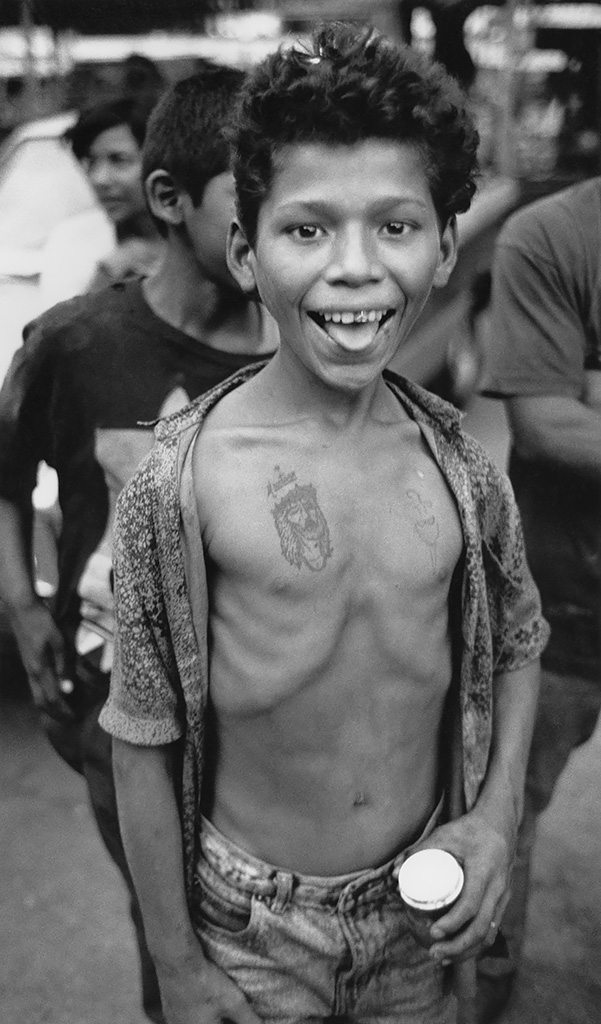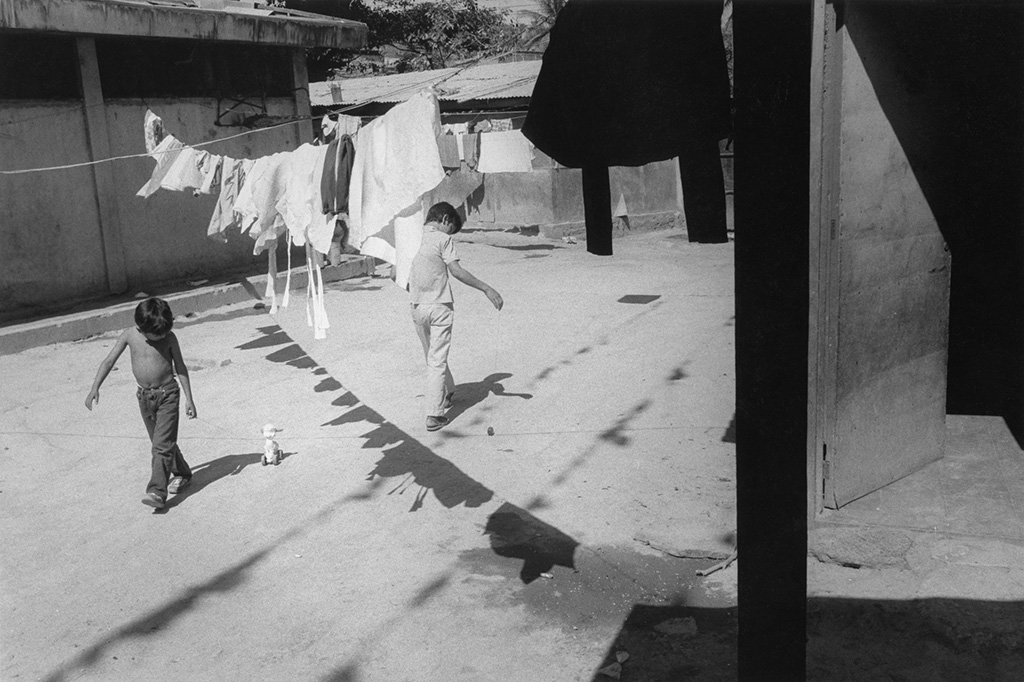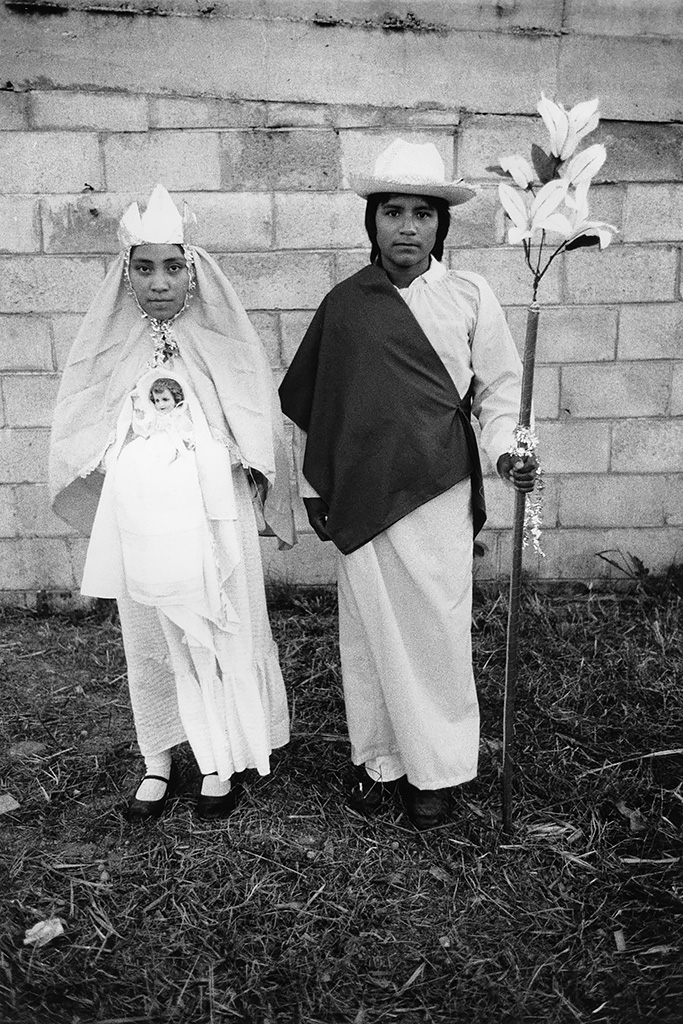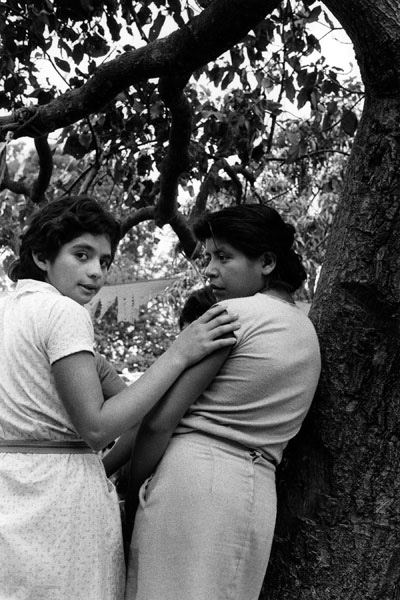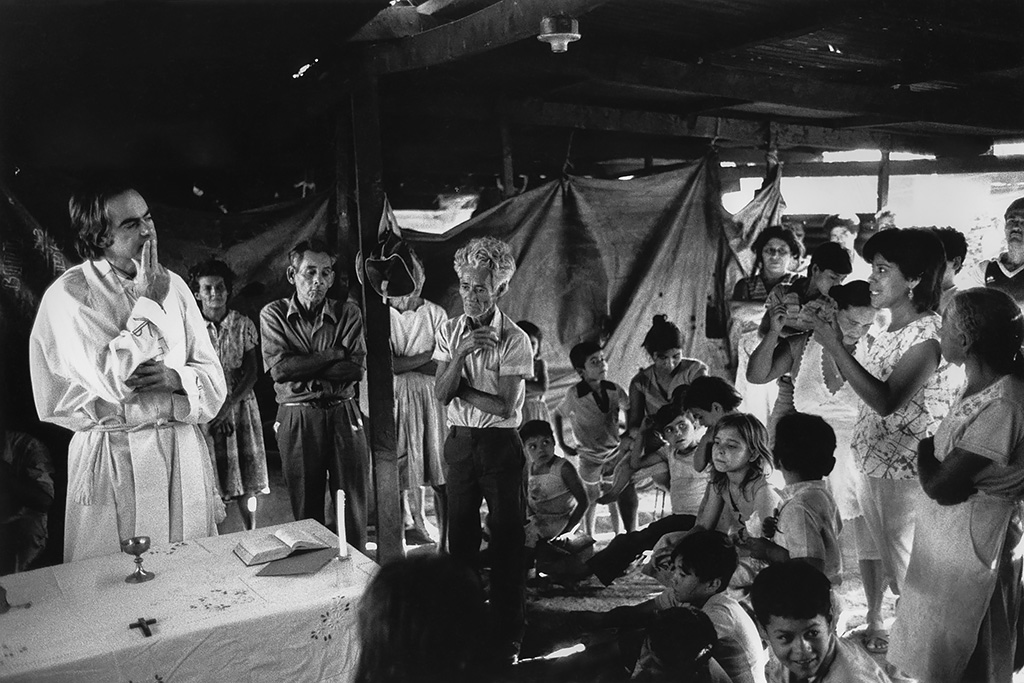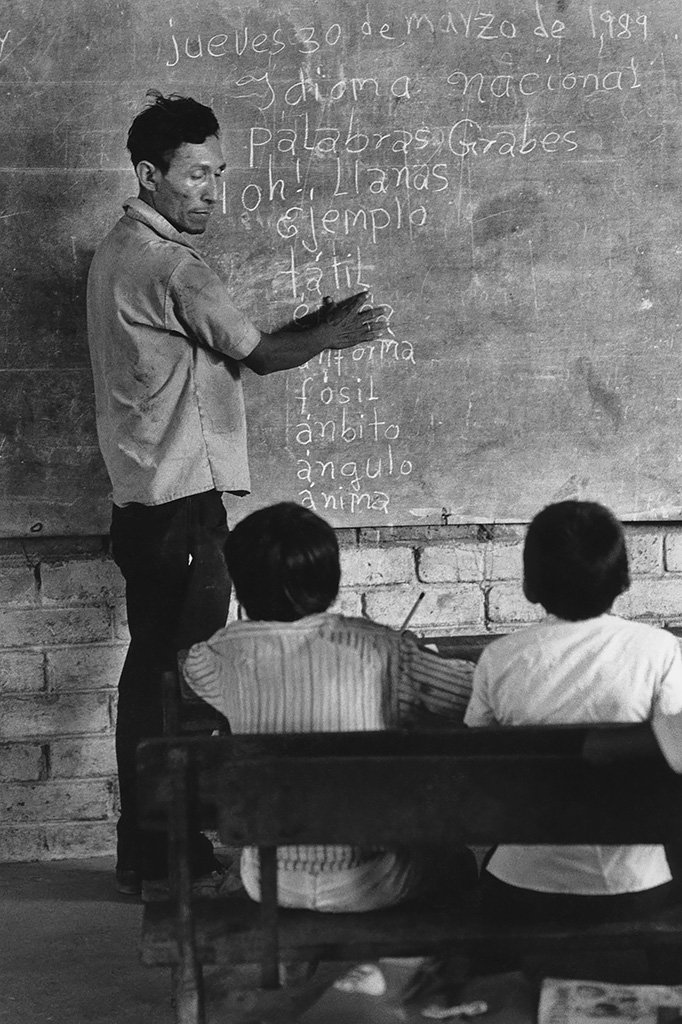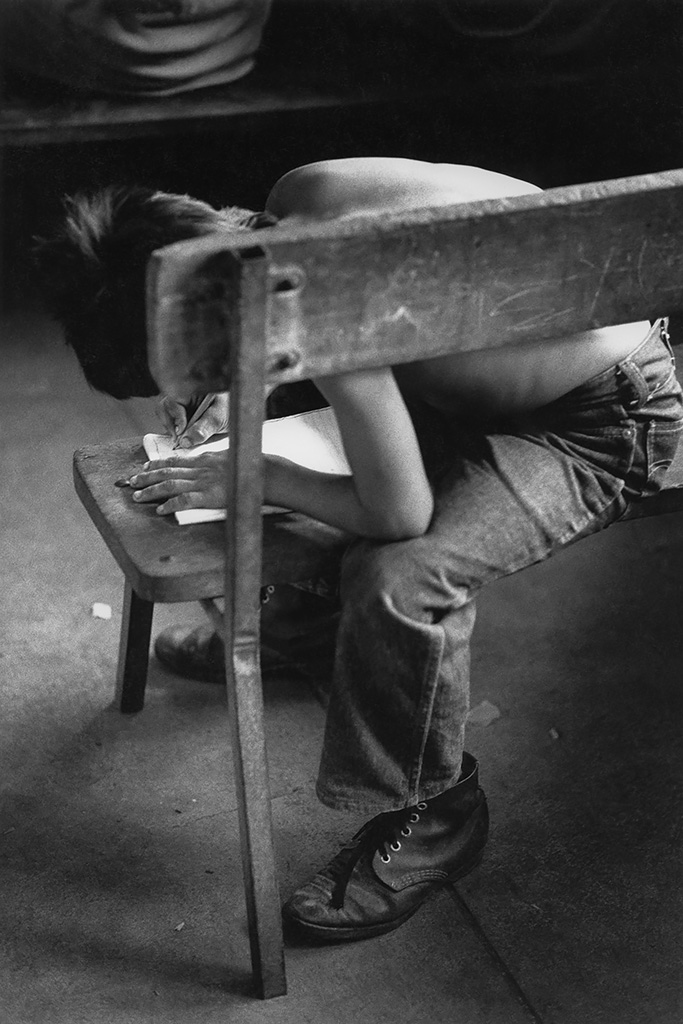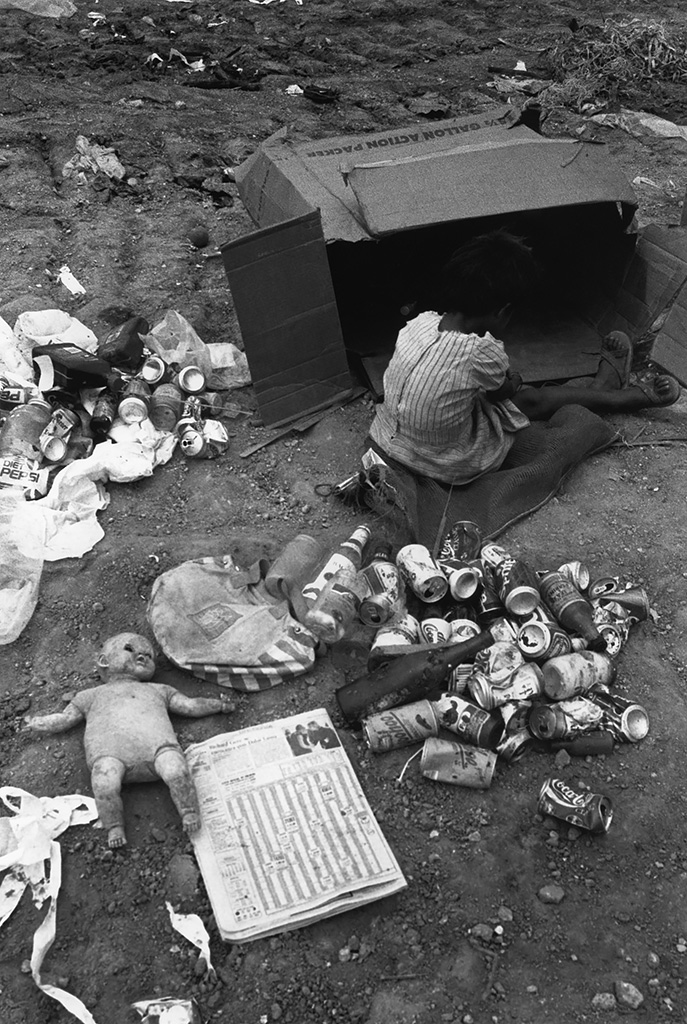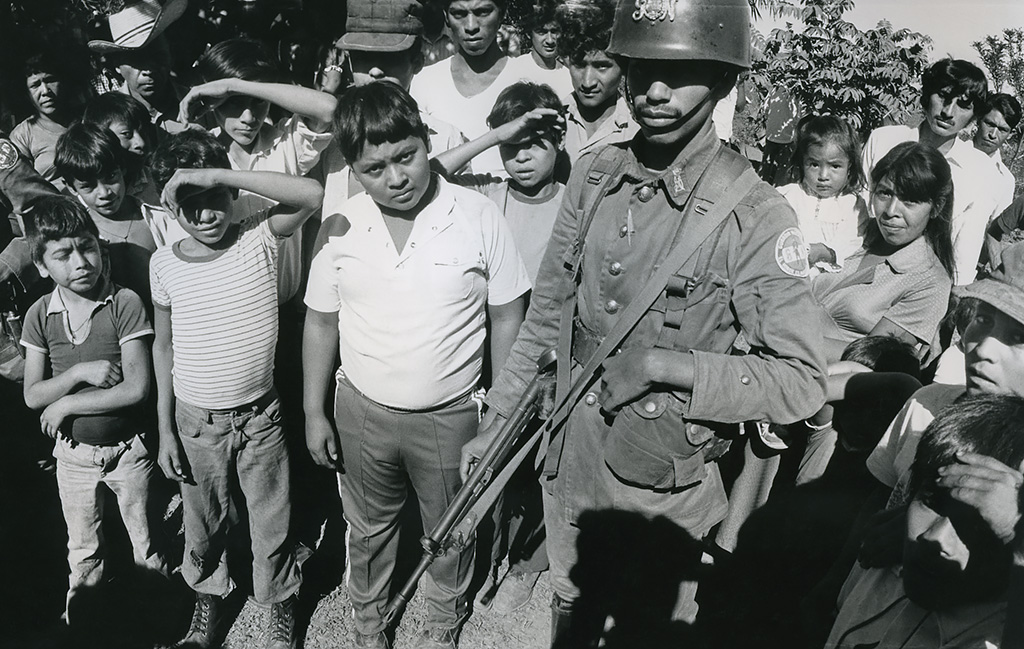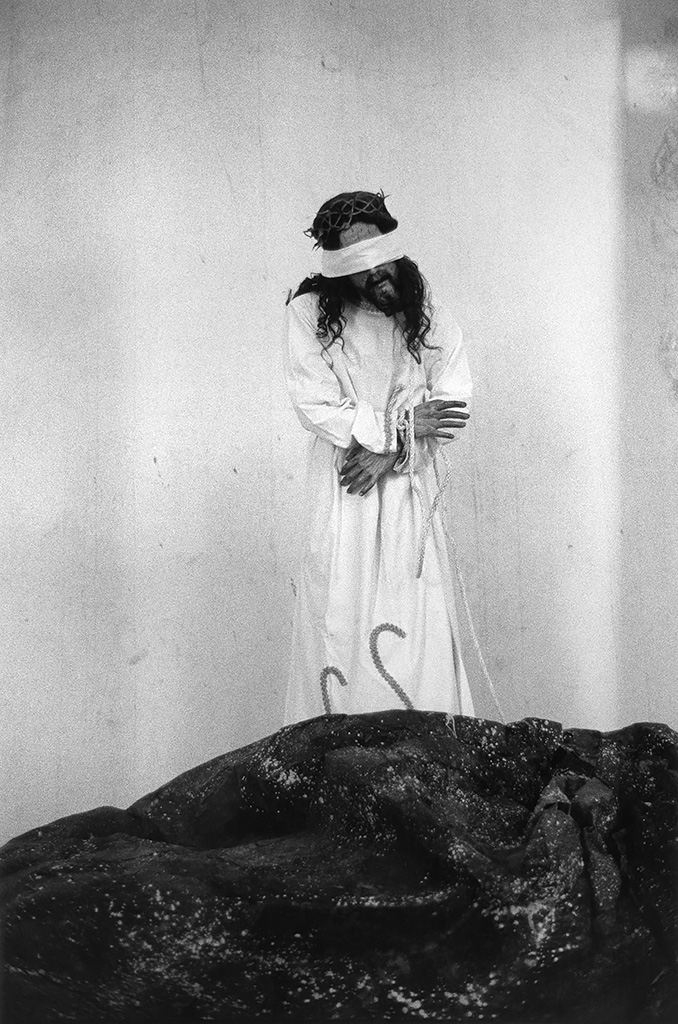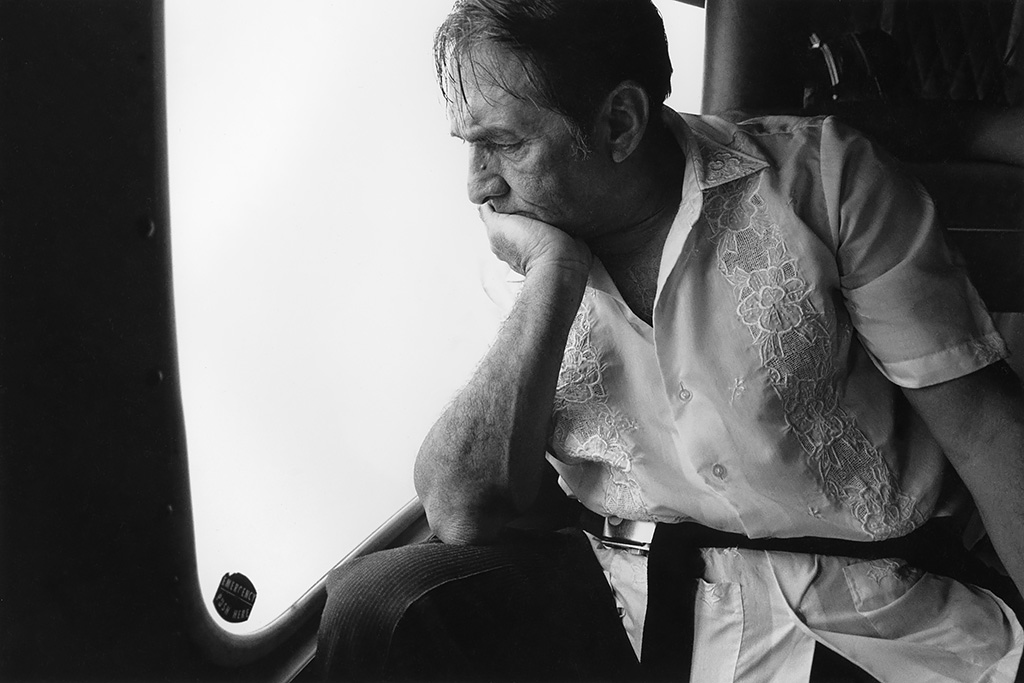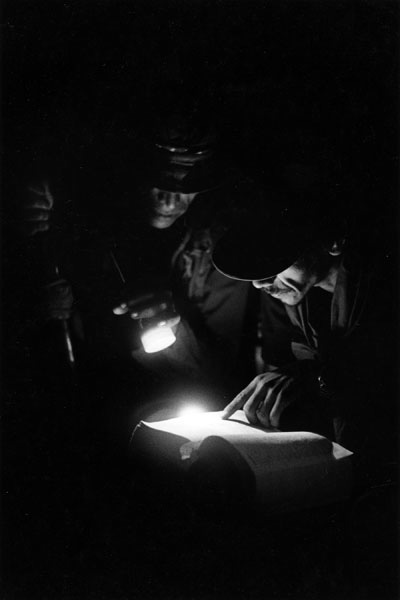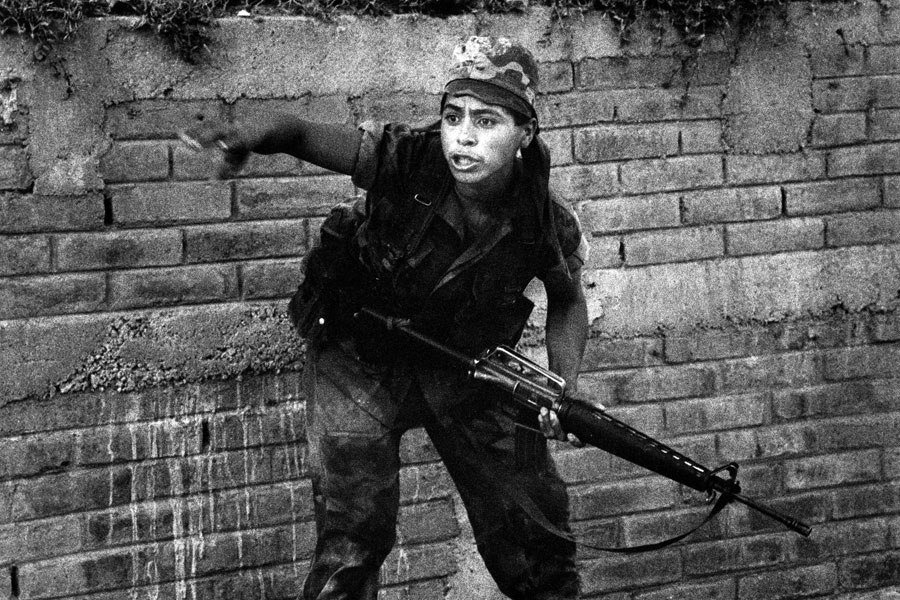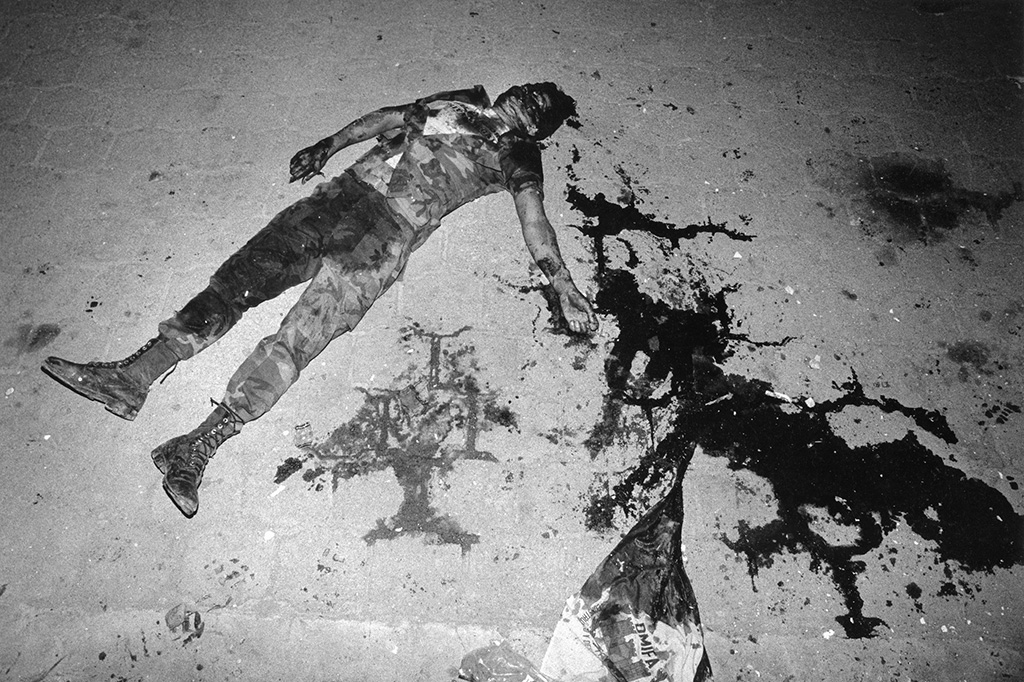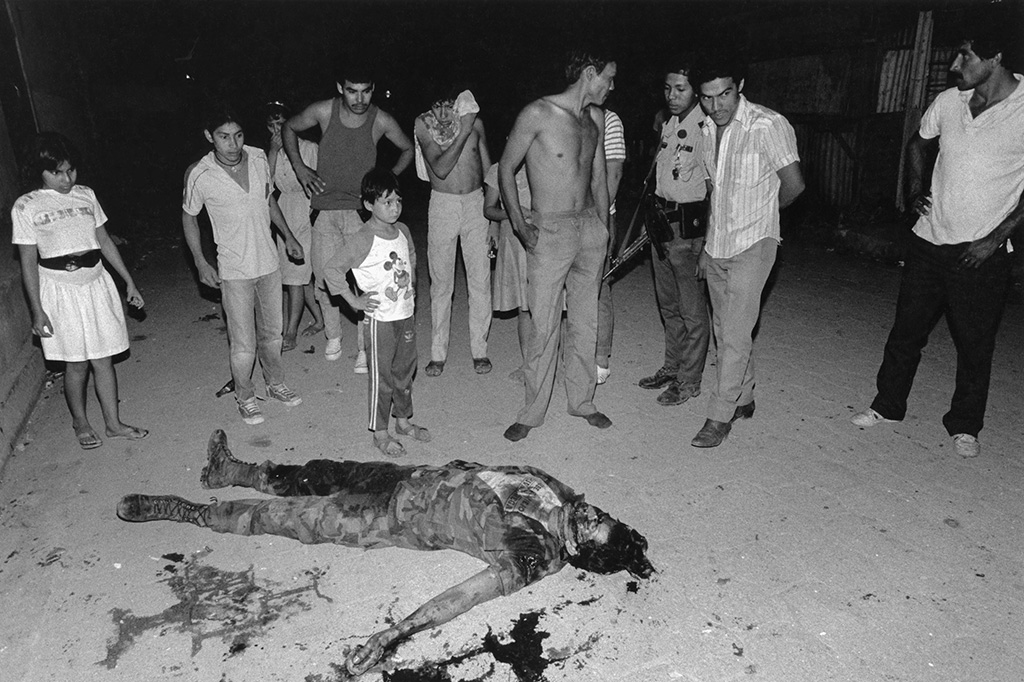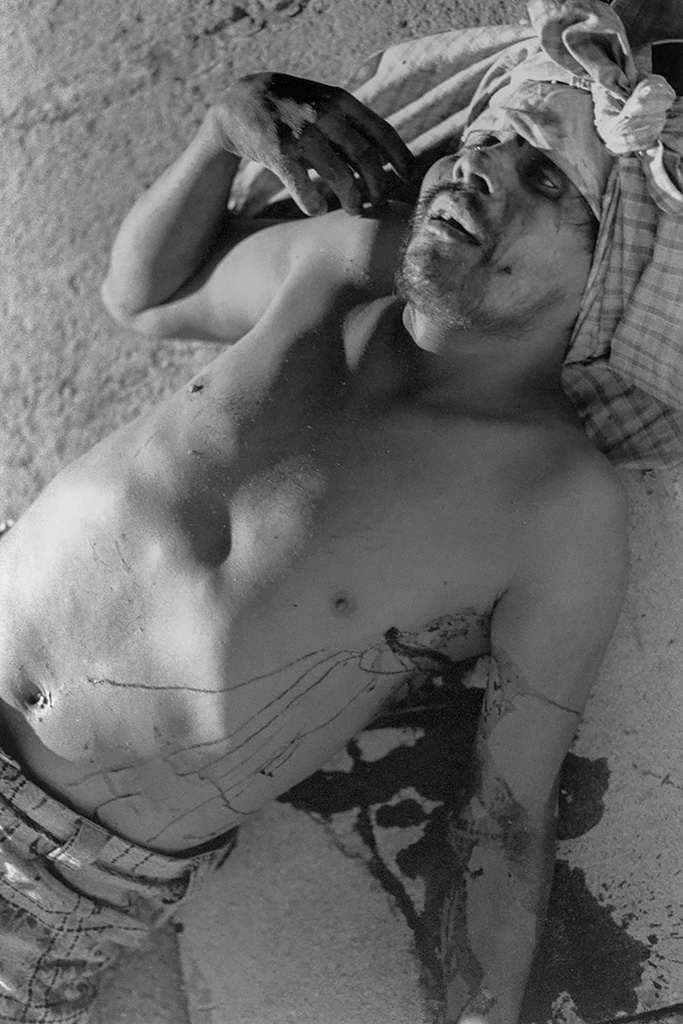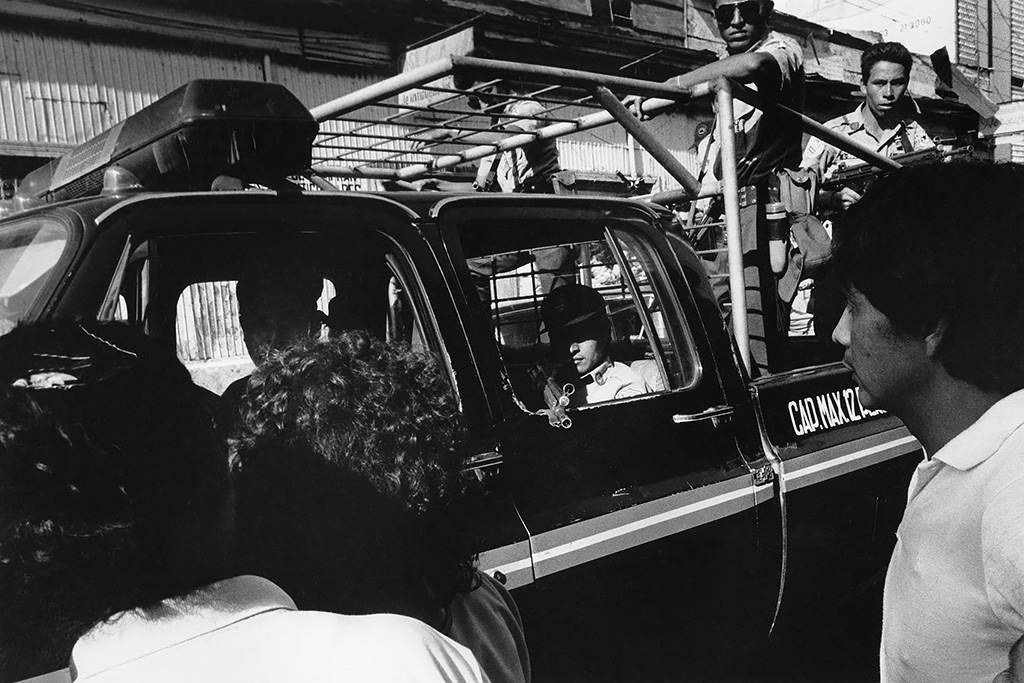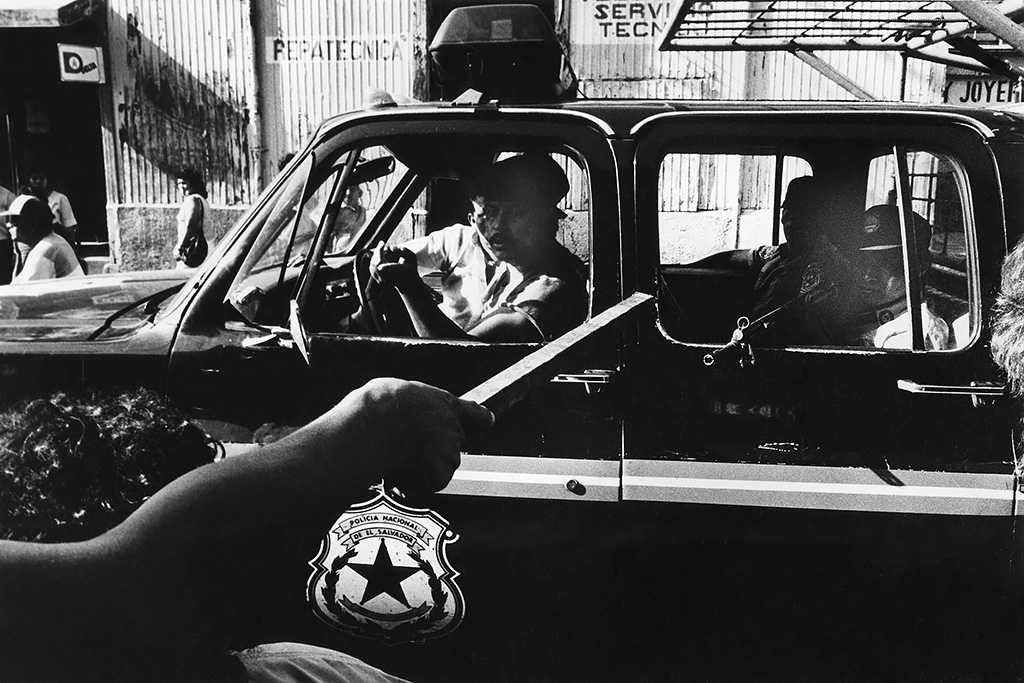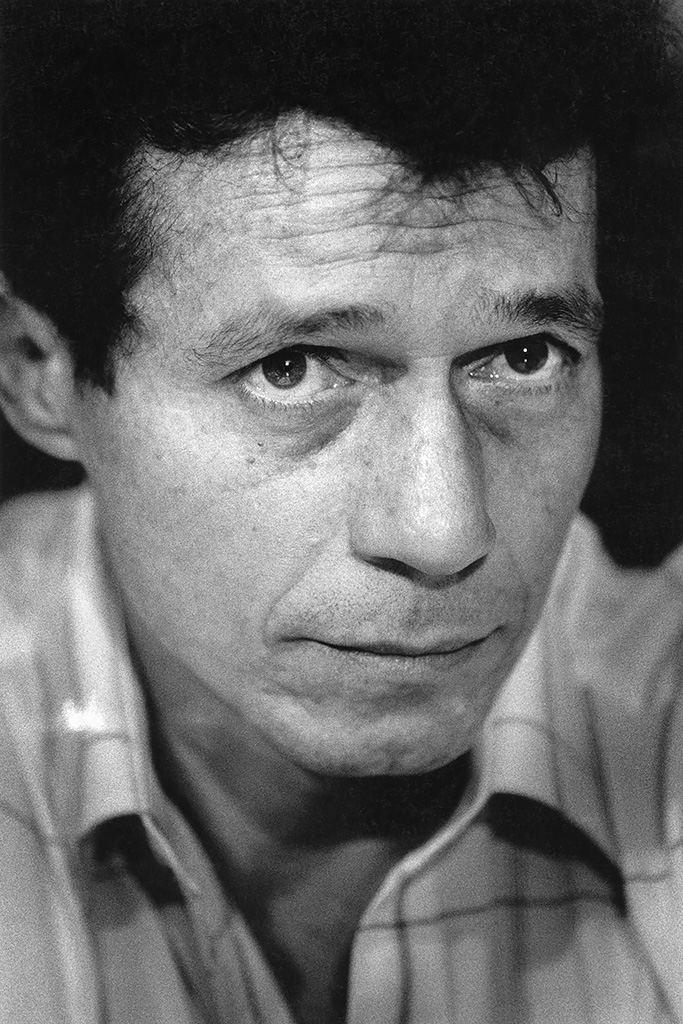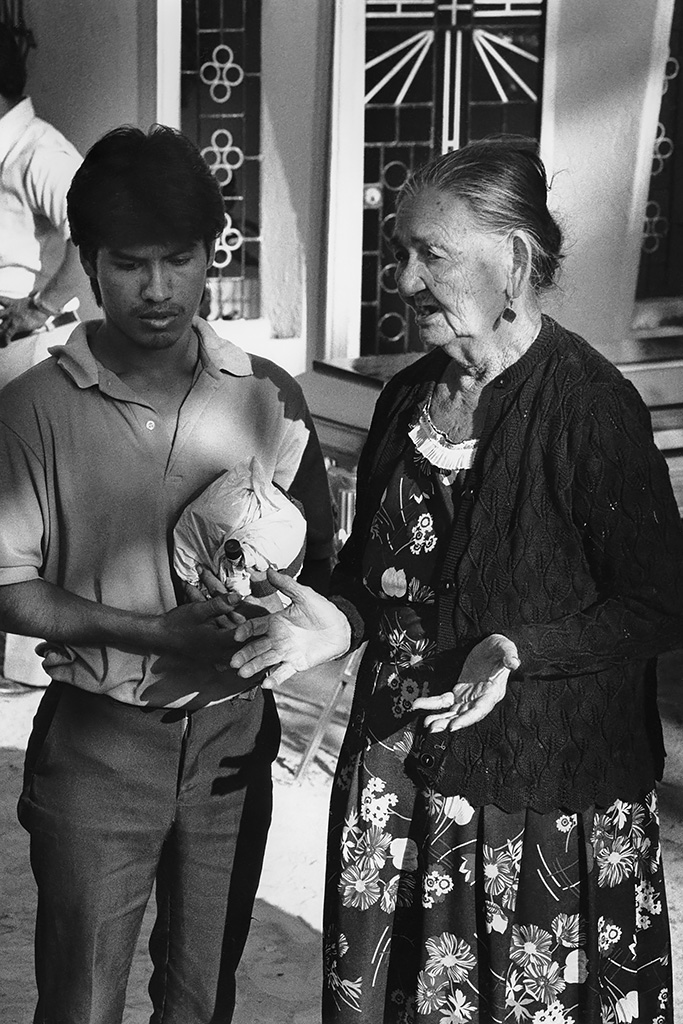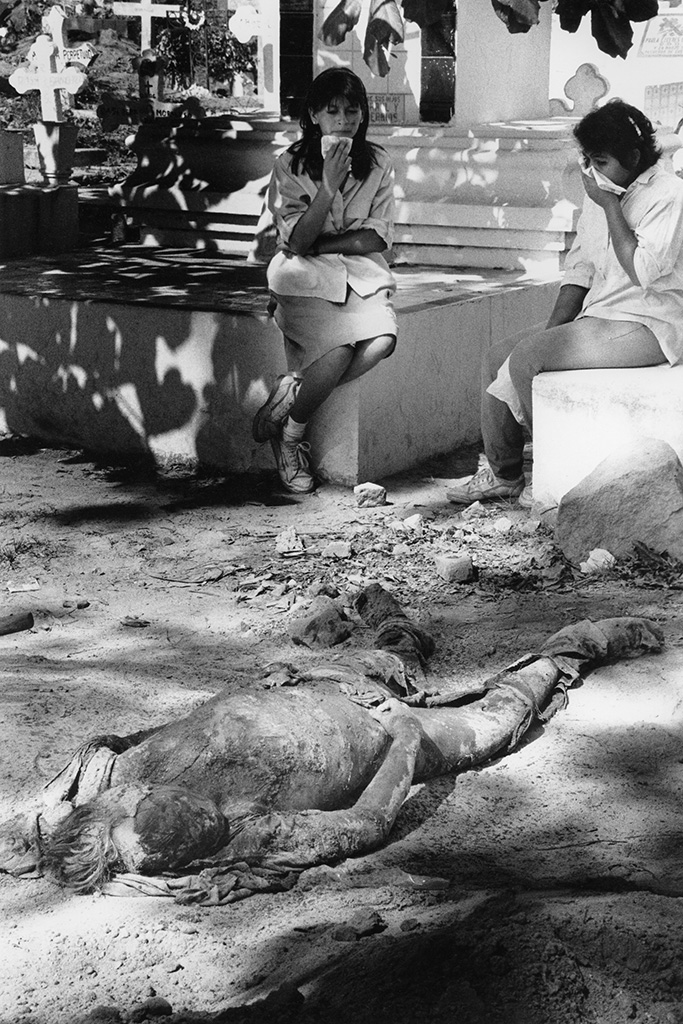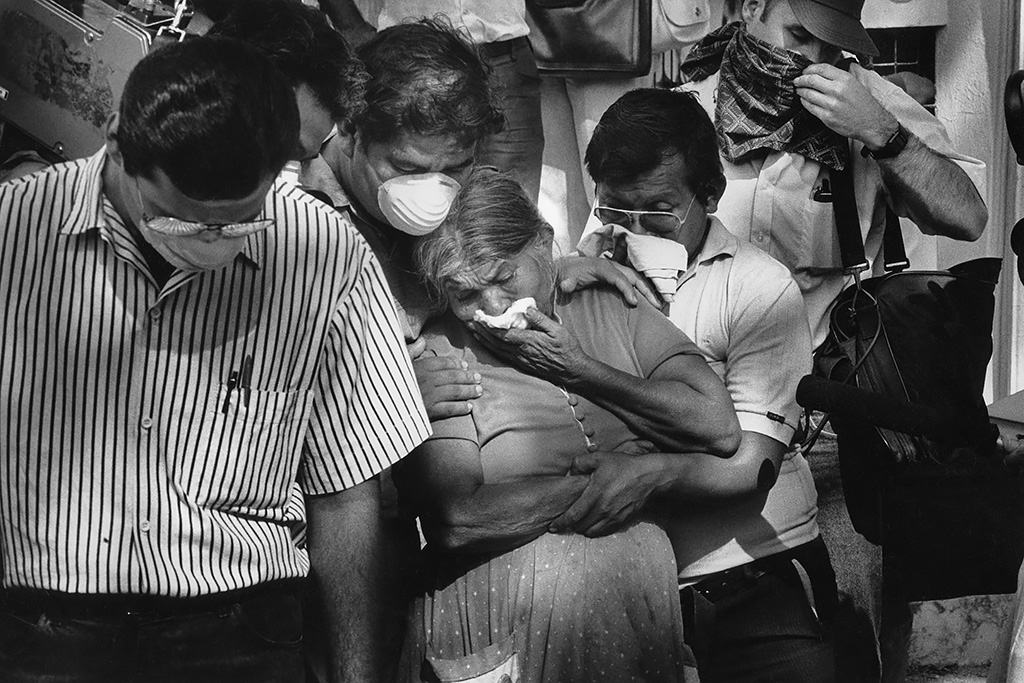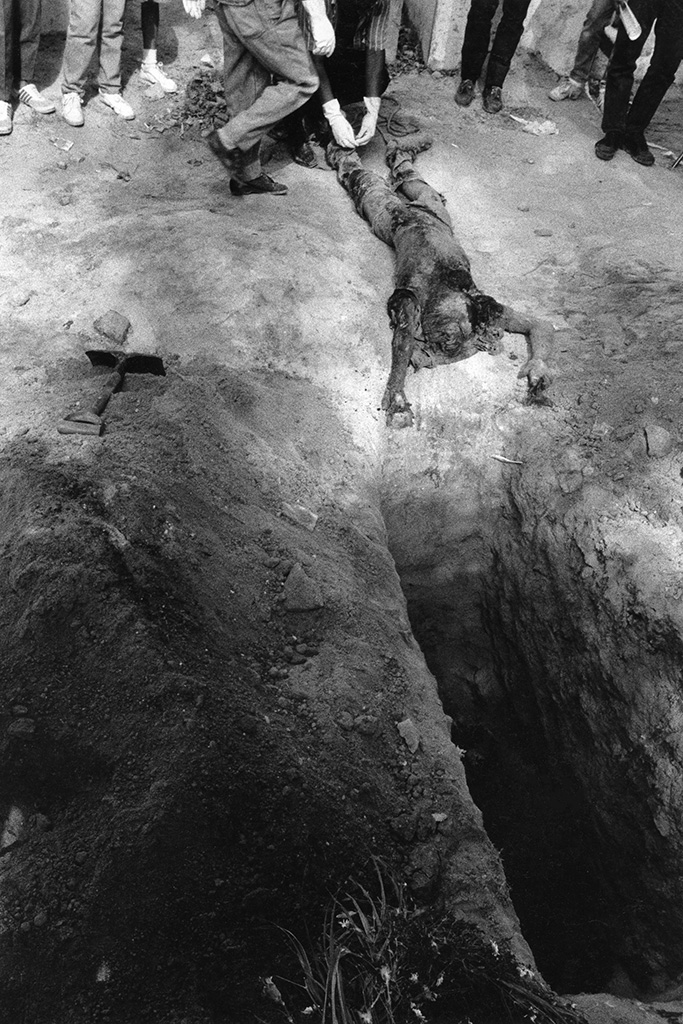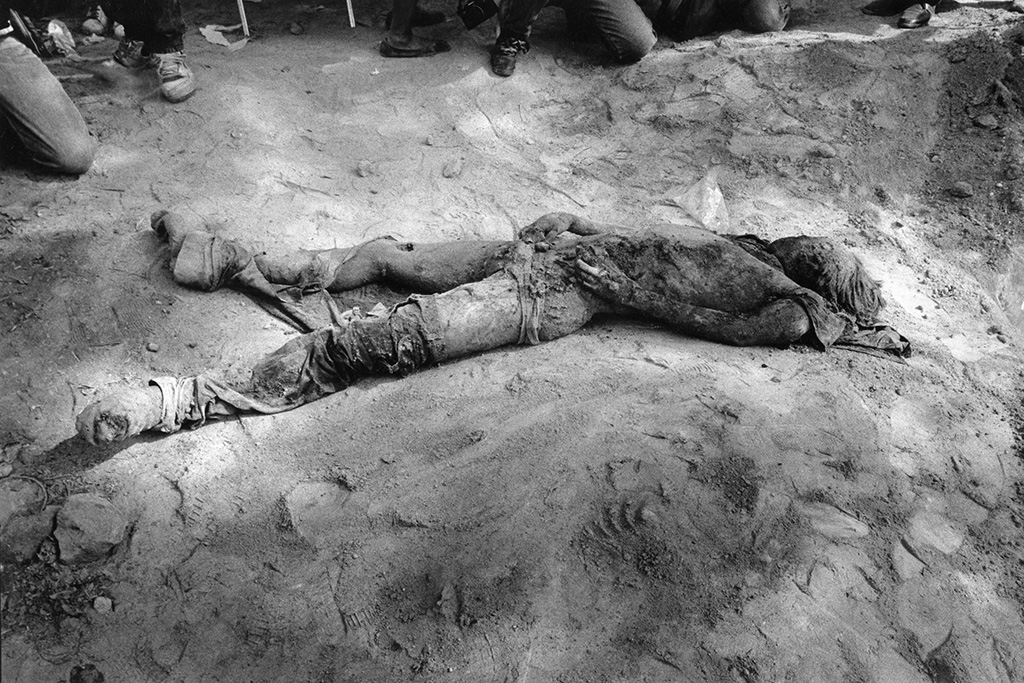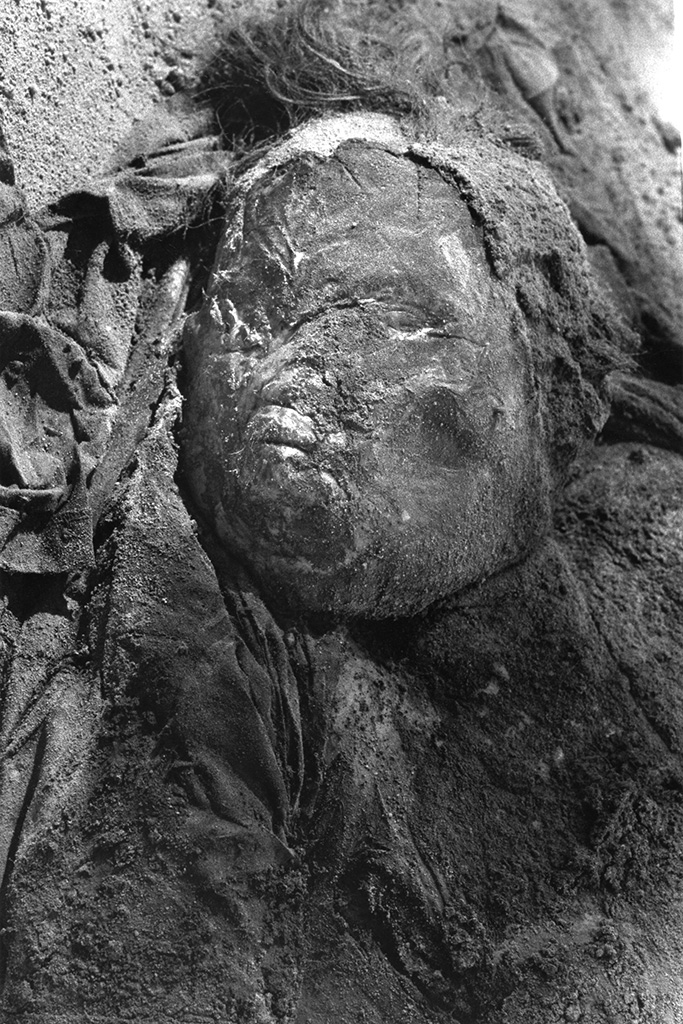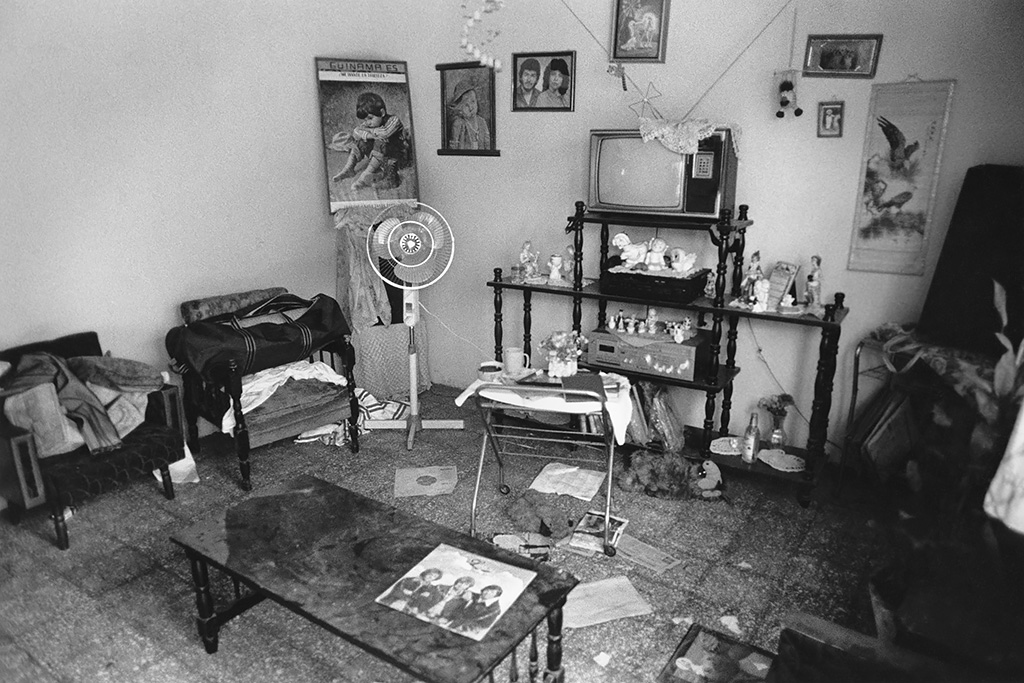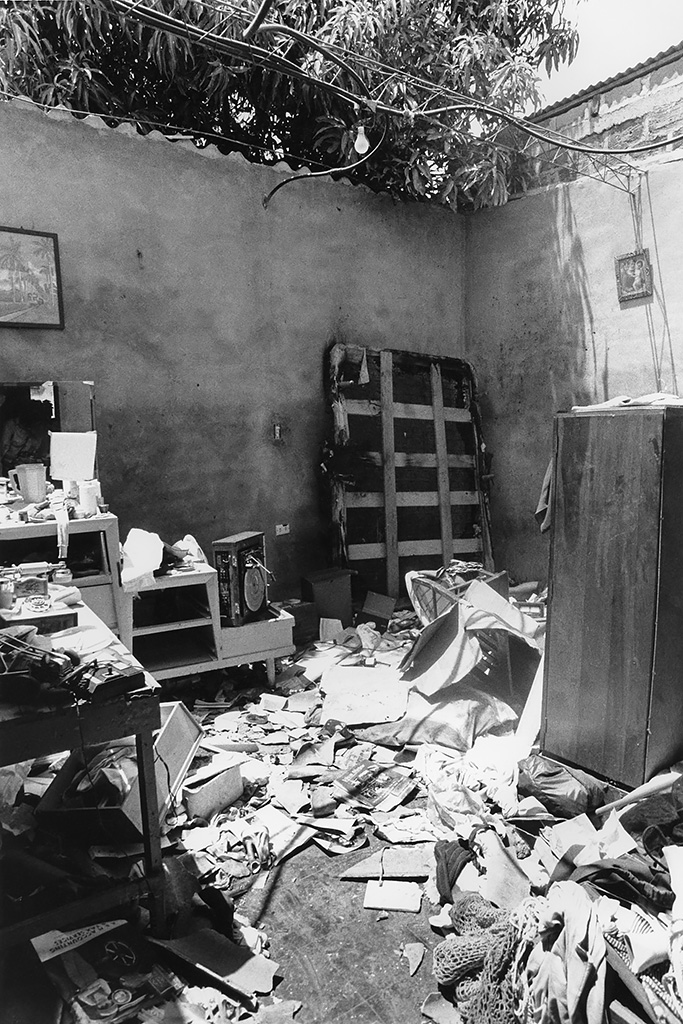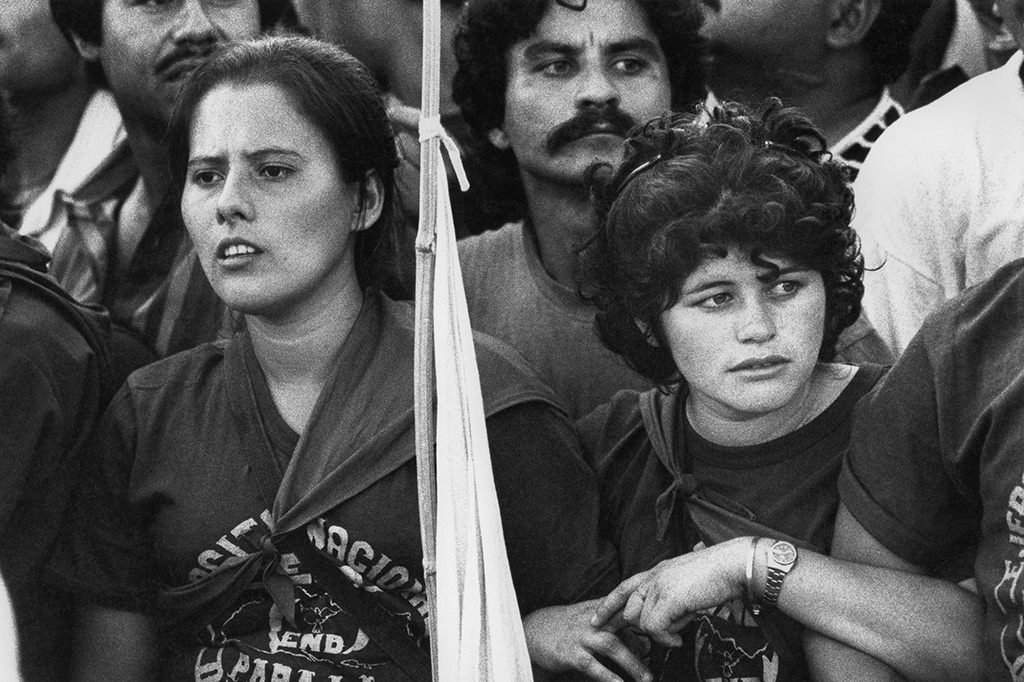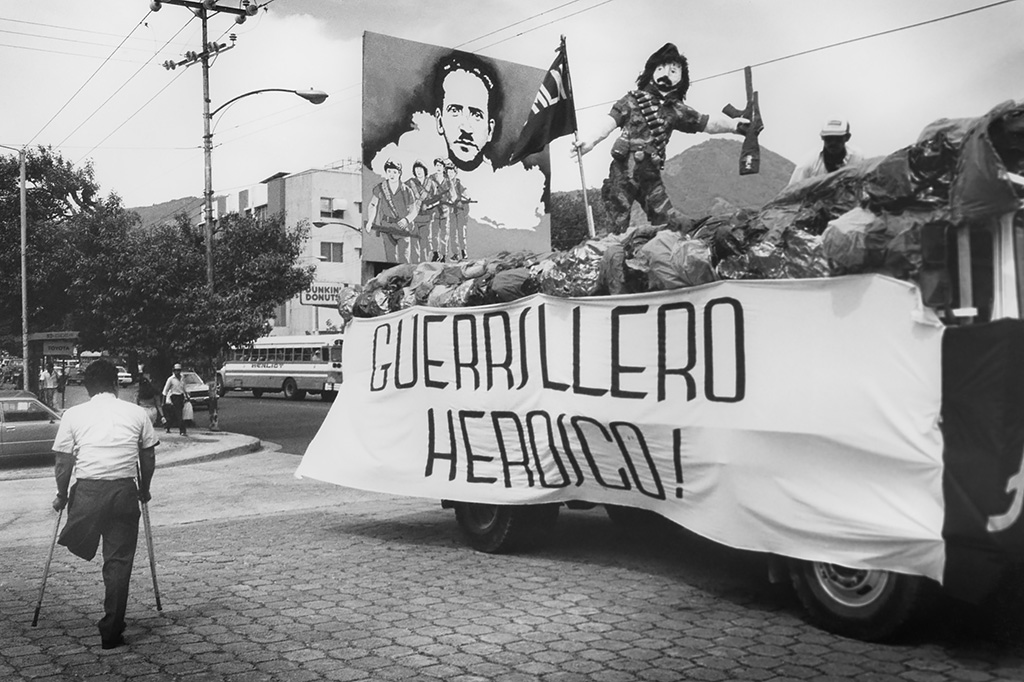1985
Steve was invited to a friend’s wedding in El Salvador. Guests from far away were promised a guided introduction to the country if they could stay awhile. Stranger to both Latin America and Spanish, he packed his camera bag and went. The wedding fell afoul of legalities and was cancelled. The frustrated couple fled to the shore. Presenting himself as a speechless foundling on the doorstep of the archdiocese of San Salvador, Steve asked to be sent to somewhere more human for Christmas. His wish was granted the next day when two American nuns took him to a camp the church had created for displaced persons. Calle Real was for refugees from Operation Phoenix, which had been directed by American military advisors. The military had destroyed all the villages in the Guazapa region to deprive guerrillas there of civilian sympathy and support. Those who survived the air, artillery, and infantry sweeps were collected in trucks and left at Calle Real. After cooking up a gloppy mess of spaghetti for 150, Steve was welcomed to an El Salvador that had most of its domestic joys suppressed.
Since that first visit in 1985, he has returned six times. During these fratricidal years the country’s spasms have been witnessed by some powerful photojournalists. Moriarty’s collection, from which this exhibition is excerpted, portrays the people who endure. He has had extraordinary access to people on either side of the national struggle and has seen and shown them free of caricature. Like the Londoners whose every night meant possible death from the Blitz, his Salvadorians crouch to avoid the smack and thud of death, but bear and rear their children as they must. Within earshot of devastation, life is sown.
— James T. Burtchaell, C.S.C
From Stories from Salvador: Photographs by Steve Moriarty. The Snite Museum of Art, University of Notre Dame, 1991.

